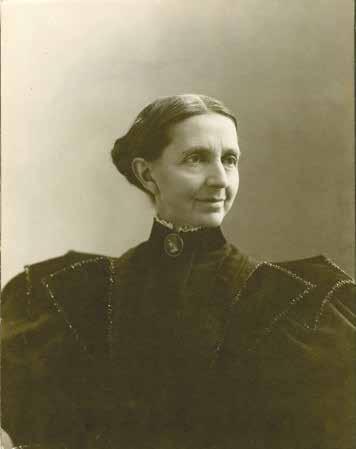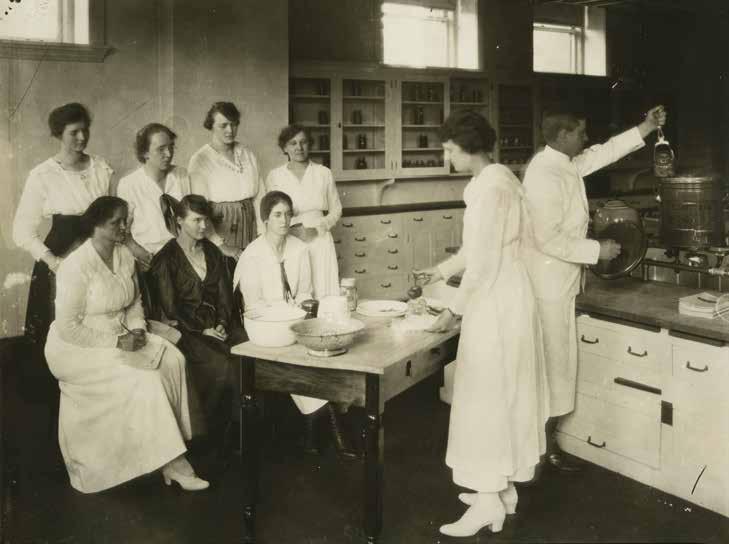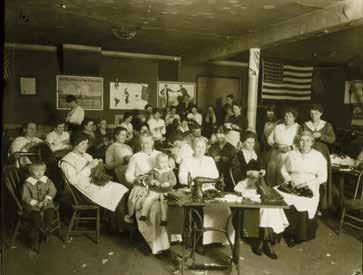
2 minute read
Women’s Day
This famous strike began on February 23 on the Julian calendar used in Russia at the time — March 8 on the more widely used Gregorian calendar, which solidified March 8 as International Women’s Day.
Because of IWD’s associations with socialism and countries the United States had tense relationships with, the
While she pre-dated International Women's Day, one of Duluth's most well known women's rights advocates from the 19th century was Sarah B. Stearns. Stearns was an advocate of women's suffrage and was the first woman to serve on the Duluth School Board.

Photo courtesy of University of Minnesota Duluth, Kathryn A. Martin Library, Northeast Minnesota Historical Collections day was not largely celebrated in the U.S. as it was elsewhere. It wasn’t until 1975 that the day was officially observed by the United Nations.
The U.S. did, however, implement Women’s History Week on March 7, 1982, which blossomed into Women’s History Month by the end of the decade, per the Women’s History Month website.
International Women’s Day was celebrated in over 100 countries by 2014 and as a national holiday in over 25 of them, as stated by HISTORY.
The holiday is celebrated in a variety of different ways. In many countries, women are given flowers like la Festa della Donna in Italy in which women are presented with mimosa blossoms. In China, some women are given a halfday off of work, according to
Continued on page 28
Women attend a canning demonstration in 1918 to learn how to preserve food. WWI dampened International Women's Day celebrations across the globe. Because of the holiday's ties with socialism, the day has not been as largely celebrated in the U.S. as elsewhere.
Women sew war posters for World War I in 1918. WWI dampened International Women's Day celebrations across the globe. Because of the holiday's ties with socialism, the day has not been as largely celebrated in the U.S. as elsewhere.


Two women from the Red Cross fundraise in 1918. WWI dampened International Women's Day celebrations across the globe. Because of the holiday's ties with socialism, the day has not been as largely celebrated in the U.S. as elsewhere.
Photo courtesy of University of Minnesota Duluth, Kathryn A. Martin Library, Northeast Minnesota Historical Collections the BBC.

Labor World staff work in their office in Duluth's Manhattan Building around 1910. The Labor World weekly newspaper was founded by suffragette and labor rights advocate Sabrie Akin in 1896, highlighting the link between women's rights and labor rights at the time. Labor World is still around today and is published by Duluth AFL-CIO Central Labor Body.

The International Women’s Day website and online platform was created in 2001 to bring more attention to the holiday, largely through social media campaigns. This year’s campaign theme is #BreakTheBias, to promote “a world free of bias, stereotypes and discrimination,” according to their site.
International Women’s Day has always stood as a time to celebrate women’s progress and draw attention to the gender inequities that still remain.
According to Tracy Bower of Forbes, women have been hit especially hard by the COVID-19 pandemic due to a multitude of factors. Rates of domestic violence are increasing, more women are losing jobs than men, and child care has become more of a burden, particularly in the context of online schooling.
The notorious wage gap between men and women is still staggering, with women earning 84 cents for every dollar a man makes, according to the Center for American Progress. This gap widens for women of color, with Black women earning only 64 cents, Hispanic women 57 cents, and Native American women an estimated 60 cents to every white, nonHispanic white male dollar. Equal Pay Day also happens to be celebrated in the month of March.
Women’s rights have come a long way since International Women’s Day began. IWD offers time to rejoice, reflect and reimagine a future with true gender equality. D
Abigail Blonigen is a Minnesota freelance writer.








